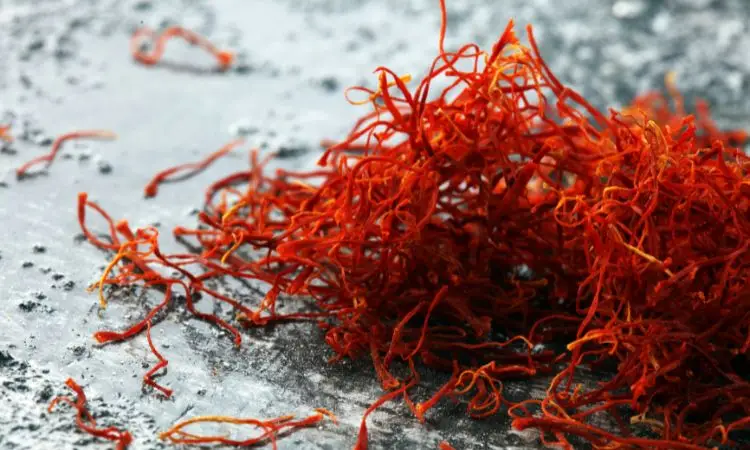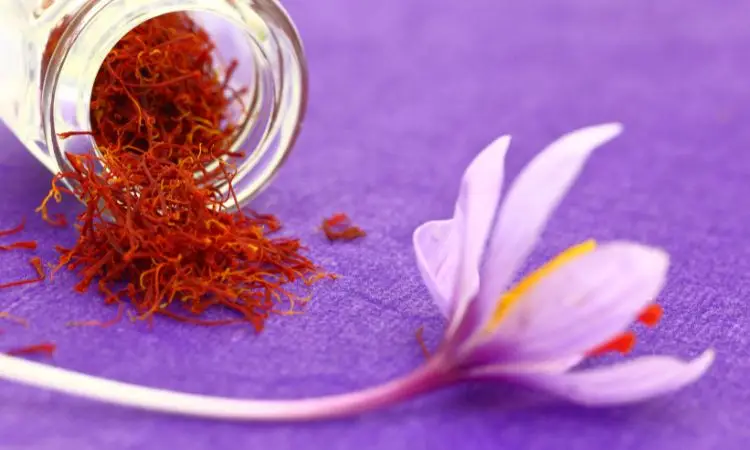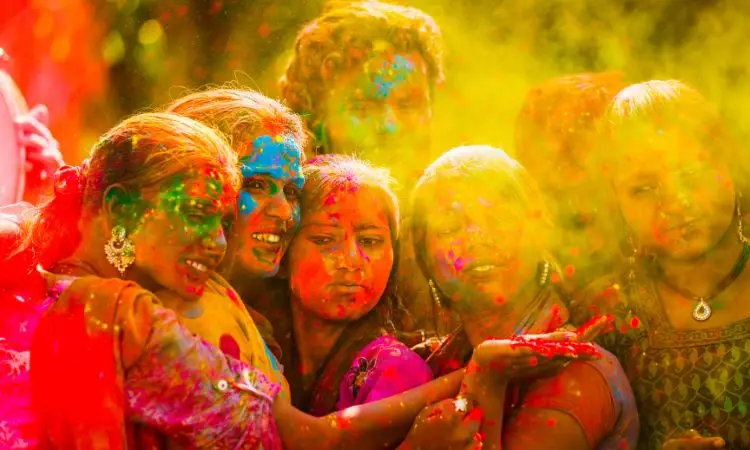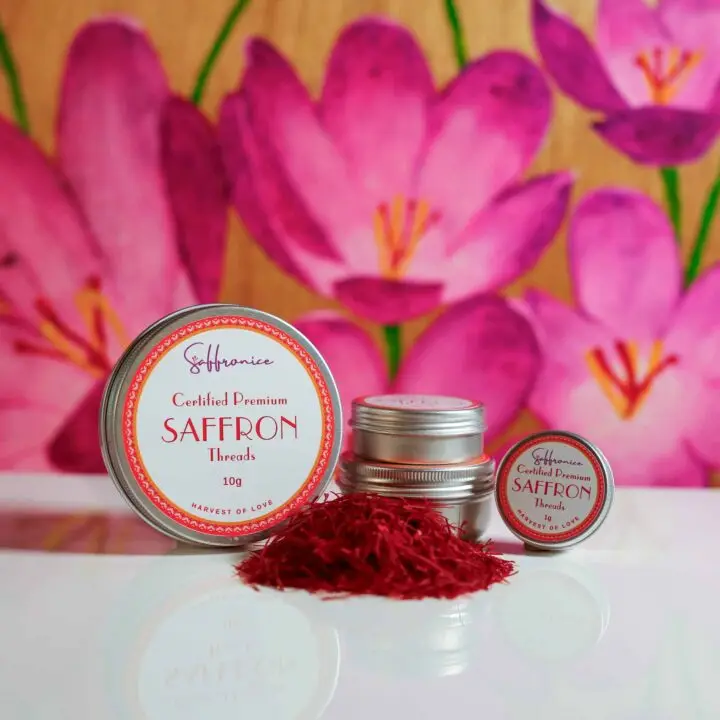📌 Quick Answer: Saffron festivals celebrate this precious spice across cultures, from Diwali in India, where saffron colors traditional sweets and decorations, to harvest festivals in Iran and Spain. These celebrations combine religious significance, culinary traditions, and economic importance, with saffron symbolizing purity, prosperity, and spiritual enlightenment across Hindu, Buddhist, and Islamic traditions worldwide.
Cultural and Religious Significance of Saffron
What is saffron beyond its culinary value? This golden spice serves as a bridge between the material and spiritual worlds, holding profound significance in religious celebrations across diverse cultures. Understanding the role of saffron in spirituality and religion reveals why this precious spice commands such reverence during festive occasions.
Symbolic Meanings Across Cultures
Hindu Traditions: In Hinduism, saffron’s golden hue represents fire, the sun, and spiritual purity. The color symbolizes renunciation of material desires and the pursuit of enlightenment. Hindu deities are often adorned with saffron-colored garments and tilaka marks, while temples use saffron in ceremonial offerings and decorations.
Buddhist Practices: Buddhist monks wear saffron-dyed robes as symbols of simplicity, wisdom, and detachment from worldly pleasures. The color represents the middle path between indulgence and extreme asceticism, making saffron integral to Buddhist spiritual identity.
Islamic Connections: In Islamic traditions, saffron is associated with paradise and divine beauty. The spice appears in religious texts describing celestial realms, and is incorporated into special ceremonial foods during religious holidays.
Historical Documentation
Saffron’s spiritual significance spans millennia, with the earliest mention in Hindu scriptures dating to 1,000 BCE in the Rigveda. This ancient documentation highlights the spice’s deep-rooted importance in religious practices, extending far beyond its economic value.
Chef’s Professional Tip: When preparing saffron for religious ceremonies, traditional methods involve soaking threads in warm milk or water to release the maximum color and aroma—techniques that enhance both the sensory experience and symbolic impact of the spice.

Diwali: Festival of Lights and Golden Traditions
Diwali, the most significant Hindu festival, showcases saffron’s central role in celebratory traditions. This five-day celebration of light’s triumph over darkness transforms communities worldwide through saffron-enriched customs that blend spiritual meaning with culinary artistry.
Religious Ceremonies and Sacred Rituals
During Diwali, saffron serves multiple ceremonial purposes:
Temple Worship:
- Saffron paste adorns deity statues
- Golden threads are offered during prayers
- Tilaka marks are applied using saffron mixtures
- Sacred fires are blessed with saffron offerings
Home Ceremonies:
- Family altars decorated with saffron-colored flowers
- Lakshmi puja rituals incorporate saffron preparations
- Rangoli patterns often feature golden saffron hues
- Meditation practices enhanced with saffron aromatics
Traditional Saffron-Infused Diwali Foods
Diwali’s culinary traditions showcase saffron’s transformative power in festival preparations. Learning how to cook with saffron properly ensures these traditional dishes achieve their authentic flavors and appearance.
Essential Diwali Sweets:
Kesar Peda:
- Milk-based confection infused with saffron
- Golden color symbolizing prosperity
- Soft texture enhanced by saffron’s natural compounds
- Traditional preparation passed through generations
Saffron Gulab Jamun:
- Fried milk dumplings in saffron-scented syrup
- Rose water and saffron create complex aromatics
- Symbolic of sweetness entering the new year
- Popular across Indian communities globally
Zarda Rice:
- Festive sweet rice preparation with saffron coloring
- Nuts and dried fruits complement saffron’s flavor
- Served during family gatherings and community celebrations
- Represents abundance and sharing
Decorative Traditions and Visual Elements
Rangoli Art: Traditional floor decorations often incorporate saffron powder, creating intricate patterns that welcome prosperity. These temporary artworks use saffron’s natural golden color to represent wealth and good fortune.
Diya Illumination: Oil lamps (diyas) filled with saffron-infused oil create aromatic lighting that combines visual beauty with spiritual significance. The golden glow represents knowledge dispelling ignorance.
Food Scientist’s Note: Saffron’s crocin compounds provide natural golden coloring without artificial additives, making it ideal for traditional preparations where purity and authenticity are paramount.
Hindu Color Festivals and Saffron Connections
While saffron plays a direct role in some Hindu festivals and indirect connections in others, understanding these relationships reveals the spice’s broader cultural significance within Hindu celebrations.
Holi: Spring Colors and Natural Dyes
Holi, the festival of colors celebrating spring’s arrival, traditionally used natural pigments, including saffron-derived colors. Though not exclusively a saffron festival, Holi’s emphasis on natural, vibrant colors aligns with saffron’s cultural values.
Historical Color Sources:
- Turmeric for yellow hues
- Beetroot for red tones
- Henna for orange shades
- Saffron for golden accents
Modern Adaptations: Contemporary Holi celebrations increasingly return to natural color sources, with saffron-based preparations gaining popularity for their safety and traditional authenticity.
Dussehra: Victory Colors and Sacred Symbolism
Dussehra celebrations prominently feature saffron as a color of righteousness and victory. The festival commemorates good triumphing over evil, with saffron representing moral integrity and spiritual strength.
Traditional Observances:
- Devotees wear saffron-colored clothing
- Temple decorations feature golden marigolds
- Sacred trees are adorned with saffron fabrics
- Victory processions display saffron banners
Cultural Integration: Understanding the cultural significance helps appreciate how color symbolism creates cohesive festival experiences across different Hindu celebrations.
Sacred Rituals and Spiritual Importance
Saffron’s spiritual applications extend beyond individual festivals to encompass year-round religious practices across multiple faith traditions. These sacred uses demonstrate the spice’s enduring role in connecting practitioners with divine experiences.
Hinduism: Puja and Temple Practices
Daily Worship Applications:
- Morning prayers incorporating saffron tilaka
- Evening aarti ceremonies using saffron-scented oils
- Special occasion Abhishekk rituals with saffron paste
- Prasadam preparations blessed with saffron
Temple Traditions: Major Hindu temples maintain specific protocols for saffron use, with dedicated preparation methods ensuring purity and potency. These traditions often involve saffron tea benefits for ceremonial drinking and offering to deities.
Buddhism: Monastic Traditions and Meditation
Robe Significance: Buddhist monks’ saffron robes represent:
- Detachment from material concerns
- Commitment to spiritual development
- Humility and service to others
- Connection to the historical Buddha’s teachings
Meditation Enhancement: Saffron aromatics are sometimes used in meditation practices to:
- Enhance focus and concentration
- Create calming atmospheric conditions
- Support mindfulness development
- Connect with traditional spiritual practices
Islamic Traditions: Ceremonial and Festive Uses
Religious Celebrations:
- Eid preparations featuring saffron-enriched foods
- Wedding ceremonies incorporating saffron symbolism
- Religious holiday special meals highlighting golden spice
- Ramadan iftar preparations using traditional saffron recipes
Traditional Saffron Festivals Worldwide
Saffron festivals span continents, celebrating both the harvest season and the cultural heritage associated with this precious spice. These events combine agricultural traditions with cultural expression, creating unique celebrations that honor saffron’s global importance.
Asian Saffron Celebrations
Kashmir Saffron Festival (India): Kashmir’s annual celebration occurs during harvest season (October-November), featuring:
- Traditional harvesting demonstrations
- Cultural performances celebrating local heritage
- Saffron-based culinary competitions
- Educational exhibits on cultivation methods
- Tourism promotion for the regional economy
Saffron Harvest Festivals (Iran): Iran, producing 90% of global saffron, hosts regional harvest celebrations:
- Khorasan province community gatherings
- Traditional music and dance performances
- Saffron quality competitions among farmers
- Cultural heritage preservation activities
- Economic development through festival tourism
Middle Eastern Traditions
Taliouine Saffron Festival (Morocco): Morocco’s saffron-producing region celebrates with:
- Berber cultural music and dance
- Traditional saffron processing demonstrations
- Local artisan craft exhibitions
- Community feast preparations featuring saffron
- International visitor cultural exchange programs
European Saffron Heritage Events
Consuegra Saffron Rose Festival (Spain): Spain’s La Mancha region hosts this UNESCO-recognized event:
- Historical stigma-plucking competitions
- Traditional dance performances
- Educational tours of saffron fields
- Culinary workshops featuring regional saffron dishes
- Cultural tourism promotion
Understanding saffron production leaders helps appreciate how different regions contribute unique cultural elements to global saffron celebrations.

Festival Foods and Traditional Recipes
Saffron transforms ordinary ingredients into extraordinary festival foods that carry deep cultural meaning while delighting the senses. These traditional saffron recipes represent generations of culinary wisdom passed through families and communities.
Indian Festival Specialties
Diwali Sweet Preparations:
Kesar Kulfi:
- Traditional Indian ice cream with saffron and pistachios
- Slow-cooking process concentrates flavors
- Cardamom and rose water complement affron
- Served during the autumn Diwali celebrations
Saffron Rasmalai:
- Soft cheese dumplings in saffron-infused milk
- Delicate texture showcasing saffron’s subtle flavors
- Popular during festive family gatherings
- Regional variations across Indian states
Middle Eastern Festival Foods
Persian New Year (Nowruz) Specialties:
Sholeh Zard:
- Traditional saffron rice pudding
- Wedding and celebration centerpiece dish
- Rose water and almonds enhance the saffron base
- Symbolic of sweetness and prosperity
Zulbia and Bamieh:
- Fried pastries in saffron syrup
- Ramadan and Eid celebration treats
- Crispy texture contrasting with aromatic syrup
- Community preparation strengthens social bonds
European Traditional Applications
Swedish Christmas Traditions:
Lussekatter (Saffron Buns):
- Traditional Christmas morning bread
- S-shaped design with raisin decorations
- Saffron provides a distinctive golden color
- Family baking traditions during the Advent season
Exploring saffron desserts reveals how different cultures adapt this precious spice to local tastes while maintaining its special significance.
Beverage Traditions
Ceremonial Drinks:
Saffron Lassi:
- Yogurt-based drink for festival refreshment
- Cooling properties balancing rich festival foods
- Digestive benefits supporting heavy meal consumption
- Social sharing during community celebrations
Golden Milk (Haldi Doodh with Saffron):
- Turmeric and saffron milk preparation
- Evening ritual during festival periods
- Health benefits supporting celebration recovery
- Family bonding through shared preparation
Understanding saffron-infused drinks traditions helps appreciate how beverages contribute to festival experiences beyond simple refreshment.
Chef’s Professional Tip: When preparing festival saffron dishes, bloom the threads in warm liquid 15-20 minutes before use. This releases maximum color and flavor while ensuring even distribution throughout the preparation.
Modern Celebrations of Ancient Traditions
Contemporary saffron festivals blend traditional practices with modern interpretations, creating new ways to honor ancient customs while adapting to contemporary lifestyles and global communities.
Contemporary Festival Adaptations
Urban Saffron Events: Modern cities host saffron-themed festivals that:
- Combine traditional foods with fusion cuisine
- Feature educational components about saffron cultivation
- Include art installations inspired by saffron themes
- Promote cultural exchange among diverse communities
- Support economic development through cultural tourism
Digital Age Celebrations:
- Virtual saffron festival experiences during global events
- Online cooking classes featuring traditional saffron recipes
- Social media campaigns celebrating saffron heritage
- Digital documentation of traditional practices
- Global community connections through shared celebrations
Artistic and Cultural Expressions
Fashion and Design: Contemporary designers incorporate saffron themes into:
- Traditional festival clothing with modern cuts
- Home decoration items inspired by saffron colors
- Jewelry designs reflecting saffron’s golden hues
- Textile patterns celebrating saffron cultivation
Performance Arts: Modern interpretations include:
- Dance performances celebrating saffron harvest
- Musical compositions inspired by saffron-growing regions
- Theater productions exploring saffron’s cultural significance
- Film documentaries preserving traditional practices
Understanding saffron in art reveals how creative expressions continue evolving while maintaining connections to traditional celebrations.
Global Diaspora Adaptations
International Indian Communities: Diaspora populations maintain festival traditions through:
- Community centers hosting Diwali celebrations with authentic saffron foods
- Cultural associations organizing saffron-themed educational events
- Restaurant partnerships featuring traditional festival menus
- Intergenerational knowledge transfer through festival preparation
Cross-Cultural Integration: Modern festivals often feature:
- Fusion foods combining local ingredients with saffron traditions
- Multicultural participation in traditional celebrations
- Educational components introducing saffron culture to new audiences
- Economic partnerships supporting traditional saffron producers
Economic Impact of Festival Saffron Trade
Saffron festivals create significant economic ripple effects that extend far beyond the immediate celebration period. Understanding saffron market trends during festival seasons reveals the spice’s broader economic importance.
Seasonal Demand Patterns
Festival Season Surge: Major celebrations create predictable demand spikes:
- Diwali Period (October-November): 300-400% increase in Indian market demand
- Ramadan/Eid Seasons: Significant Middle Eastern market expansion
- Christmas Season: European and American market growth
- Persian New Year (March): Iranian domestic consumption peaks
Supply Chain Management: Saffron producers and distributors prepare for festival seasons through:
- Advanced inventory planning and storage
- Quality assurance for increased processing volumes
- Distribution network expansion for peak periods
- Pricing strategies accommodating seasonal fluctuations
Tourism and Cultural Economy
Festival Tourism Impact:
Regional Economic Benefits:
- Hotel and accommodation bookings increase during the saffron festivals
- Local transportation services experience higher demand
- Restaurant and food service revenue expands
- Artisan and craft sales support local economies
Kashmir Saffron Festival Economic Data:
- An estimated 40,000+ visitors annually
- $2.5 million direct tourism revenue
- 1,500+ temporary employment opportunities
- 200+ local vendor participation
Retail and E-commerce Growth
Festival Shopping Patterns: Consumer behavior during festival seasons shows:
- Gift purchasing is driving premium saffron sales
- Online ordering is increasing for diaspora communities
- Bulk purchasing for family celebration preparations
- Quality preference over price sensitivity
Market Expansion: Festivals create opportunities for:
- New market penetration in non-traditional regions
- Product education reaching broader consumer bases
- Brand building for premium saffron producers
- Cultural appreciation driving long-term demand
Understanding where to buy saffron online becomes crucial during festival periods when demand peaks and quality verification is essential.
Agricultural Community Support
Farmer Economic Impact: Festival demand provides:
- Premium pricing opportunities during peak seasons
- Annual income concentration supporting rural livelihoods
- Investment capacity for improving cultivation practices
- Community economic stability through predictable demand
Sustainable Development: Festival celebrations can support:
- Traditional farming method preservation
- Young farmer retention in rural communities
- Cultural knowledge transfer alongside economic benefits
- Environmental conservation through sustainable practices
Food Scientist’s Note: Understanding proper saffron dosage daily helps consumers make informed purchasing decisions during festivals, ensuring both safety and optimal flavor experiences while supporting sustainable market practices.
Preserving Traditional Knowledge
Saffron festivals serve as crucial vehicles for preserving and transmitting traditional knowledge across generations. This cultural preservation extends beyond celebration to encompass agricultural practices, culinary techniques, and spiritual traditions.
Intergenerational Knowledge Transfer
Traditional Techniques:
- Harvest timing and methods passed through families
- Recipe preparation secrets shared during festivals
- Quality assessment skills developed through observation
- Cultural significance education through participation
Modern Documentation:
- Video recording of traditional practices
- Written compilation of family recipes
- Digital preservation of festival customs
- Academic research supporting cultural continuity
Educational Components
Festival Learning Opportunities:
- Workshops demonstrating saffron cultivation
- Cooking classes featuring traditional techniques
- Cultural lectures explaining historical significance
- Hands-on experiences for younger generations
These educational elements ensure that ancient wisdom surrounding the history and origins of saffron traditions continues to reach new audiences while maintaining authenticity and cultural integrity.
Conclusion
Saffron festivals represent far more than celebrations of a precious spice—they embody the intersection of spirituality, culture, economics, and community tradition. From Diwali’s golden preparations to harvest festivals across Iran and Spain, these celebrations demonstrate saffron’s unique ability to connect people across cultures and generations.
The enduring significance of saffron in global festivals reflects both its intrinsic value as a culinary ingredient and its symbolic power as a bridge between material and spiritual worlds. As modern celebrations adapt ancient traditions for contemporary audiences, saffron festivals continue serving as vehicles for cultural preservation, economic development, and community building.
Understanding these celebrations provides insight into how a single spice can embody centuries of human tradition while adapting to modern global contexts. Whether experienced through traditional family preparations or contemporary festival interpretations, saffron celebrations offer opportunities to connect with a rich cultural heritage while creating new memories and traditions.
For comprehensive information about this remarkable spice and its cultural significance, explore our detailed guide on saffron to deepen your appreciation of saffron’s role in human celebration and tradition.
FAQ
What makes saffron so important in religious festivals?
Saffron symbolizes purity, prosperity, and spiritual enlightenment across multiple religions. Its golden color represents divine light in Hinduism, wisdom in Buddhism, and paradise in Islam. The spice’s rarity and labor-intensive harvesting add to its sacred significance, making it worthy of religious offerings and ceremonial use.
How is saffron used during Diwali celebrations?
During Diwali, saffron appears in religious ceremonies (tilaka marks, deity offerings), traditional sweets (kesar peda, saffron gulab jamun), decorative elements (rangoli patterns, aromatic diyas), and family meal preparations. The golden color symbolizes wealth and prosperity entering the new year.
What are the major saffron festivals celebrated worldwide?
Major saffron festivals include the Kashmir Saffron Festival in India, Iranian harvest celebrations, Morocco’s Taliouine Saffron Festival, and Spain’s Consuegra Saffron Rose Festival. These events combine cultural performances, traditional food preparation, agricultural education, and tourism promotion.
How do modern saffron festivals preserve ancient traditions?
Modern festivals preserve traditions through educational workshops, traditional cooking demonstrations, cultural performances, intergenerational knowledge transfer, and documentation of historical practices. They adapt ancient customs for contemporary audiences while maintaining authenticity and cultural significance.
What economic impact do saffron festivals have on local communities?
Saffron festivals create significant economic benefits through increased tourism (accommodation, dining, transportation), direct sales to festival visitors, temporary employment opportunities, artisan craft sales, and marketing for local saffron producers. Festival seasons can increase regional demand by 300-400%.
How can people participate in saffron festival traditions at home?
Home participation includes preparing traditional saffron recipes during festival periods, incorporating saffron into religious or spiritual practices, learning about saffron’s cultural significance, supporting authentic saffron producers, and sharing traditional knowledge with family members to maintain cultural connections.



